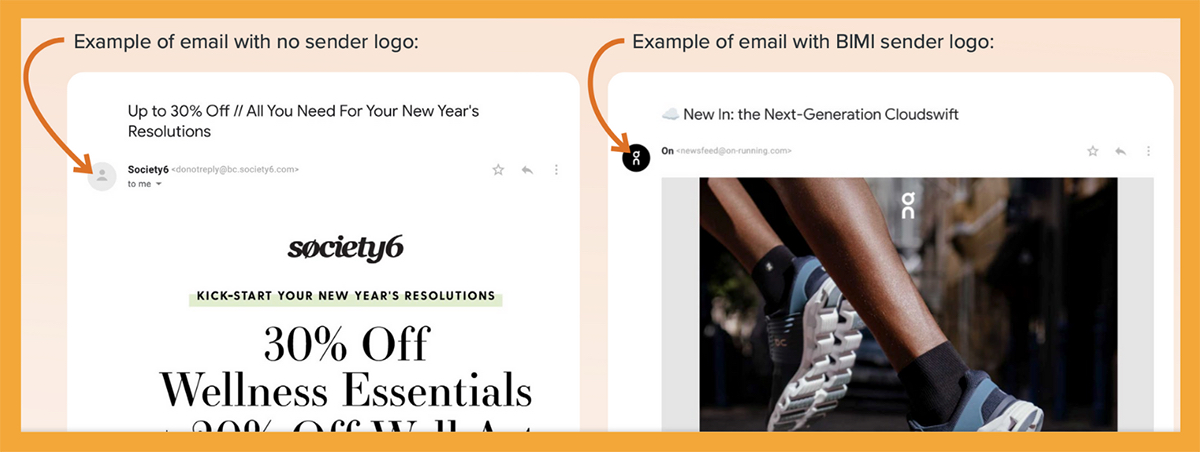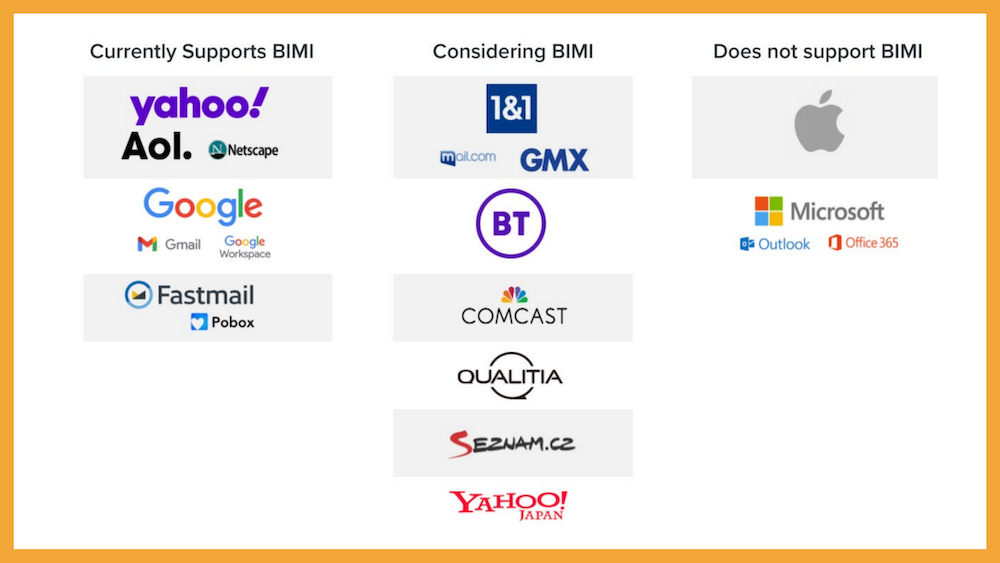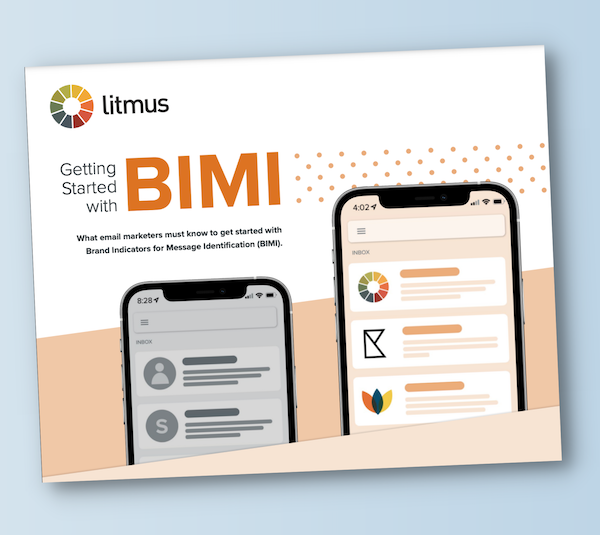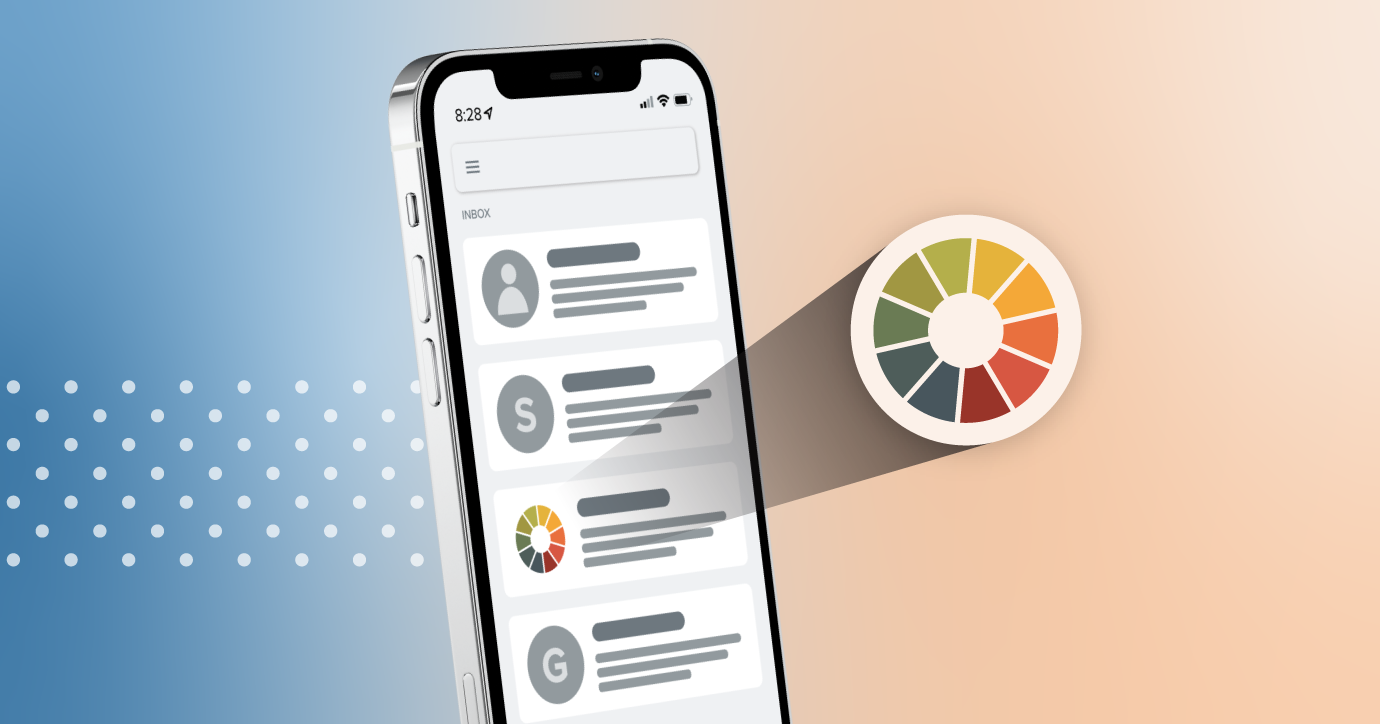Email marketers are on a constant search for a silver bullet: the one trick that gives them better visibility in front of subscribers and gets their message opened. While no such solution exists, there is something that can help.
Brand Indicators for Message Identification—referred to as BIMI for short—is an emerging email standard that can help your brand stand out in the inbox.
Let’s dig in and see how it works.
What is BIMI?
Ever noticed how some brands have their logo displayed next to their message in the inbox? The logo that appears is known as a verified sender logo.
In short, BIMI allows you to display a sender logo alongside your messages in the inbox, when verified under a set of BIMI specifications.
- According to BIMI Group, BIMI is an emerging email specification that enables the use of brand-controlled logos within supporting email clients.
Not only does BIMI help boost your brand’s visibility, but it also helps build brand recognition and trust. BIMI was created to help prevent fraudulent emails, and in a world where phishing and email scams are on the rise, as email marketers, it’s imperative we establish trust with our subscribers. One of the ways to do that is BIMI.
BIMI is a way to verify information about your brand. Like DMARC, DKIM, and SPF—three methods for verifying sender information—BIMI is a text record that lives on your servers. In fact, it works right alongside SPF, DMARC, and DKIM to signal to email clients that you are you. As such, BIMI aids in deliverability, too.

While a number of email clients already try to pull your logo into the inbox, you don’t currently have a lot of control over which logo or imagery they collect. With BIMI, however, you have direct control over what logo is displayed—allowing you to keep control over your brand and subscriber’s experience, creating trust in the process.
Different methods of verifying senders and using logos have been around for years, but the first formalized spec for BIMI was published in February 2019. The original creators have since formed the AuthIndicators Working Group to formalize and promote BIMI throughout the industry. Over the last couple of years, the working group has been joined by the likes of Fastmail, Google, Mailchimp, Proofpoint, Twilio SendGrid, Validity, Valimail, and Verizon Media (which owns Yahoo Mail).
Here’s a list of BIMI support by mailbox provider, as of March 2022:

Get the latest BIMI requirements and news from the BIMI working group.
How does BIMI work?
Like other email authentication standards, BIMI is essentially a text file. That text file follows a specific format and lives on your sending servers.
When a message is delivered, the recipient’s email service looks up the BIMI text file—and where it’s hosted—to ensure that the message can be verified. Once verified, the BIMI file tells the email service where to find the sender’s logo, and the email service pulls that logo into the inbox.
Although the underlying concept of BIMI sounds simple, there are a few key things you’ll need to get BIMI set up:
- Authentication of your emails with SPF, DKIM, and DMARC
- Access to your domain name servers to set up a new BIMI DNS entry
- An SVG file of your logo
- A Verified Mark Certificate (VMC) optional but recommended
Although not all mailbox providers support BIMI currently, others will likely add BIMI support in the future, especially as privacy measures increase in email. It’s an emerging standard that is still in development, but setting it up now will help you privacy-proof your email program.
Like everything in email, BIMI support is likely to change over time. But, with major names like Google, Verizon Media, and Fastmail involved, it’s likely we’ll see more service providers joining the working group and pilot program over the coming years.
Successful email marketing is built on trust
The initial value of BIMI for email marketers should be obvious: You get your logo to display next to your messages in supported inboxes. But the real value is in establishing trust with your brand’s emails.
The underlying goal of BIMI is to make it easy for subscribers to identify trustworthy email senders so they can have confidence in the content in their inbox. When subscribers see your logo, they can immediately trust that it’s an actual email from you and not a dangerous phishing attempt. Sure, the brand awareness of constantly seeing logos is nice, but the trust that comes along with those logos is where the magic happens.
BIMI can be beneficial to your email deliverability, too. Since so much of modern-day deliverability is based on authentication and reputation—rather than email content itself—BIMI will provide yet another mechanism to improve your odds of making it to the inbox.
As we saw earlier, BIMI requires other authentication protocols to be properly set up. For brands not using SPF, DKIM, and DMARC, the desire to use BIMI for getting their logos in front of subscribers will force them to follow authentication best practices. Combined, all of these authentication methods will make for more reliable deliverability and a better sender reputation overall.
While it’s still on you to build a relationship with your subscribers through providing value in your email campaigns, BIMI will allow you to build the foundational trust needed to hit the inbox.
 | Want to get BIMI up and running for your own emails? Check out our guide to getting started with BIMI up and running—and start creating a better experience for your subscribers today. |
Originally published March 6, 2019 by Jason Rodriguez. Last updated March 22, 2022.
The post What Is BIMI (And Why Should Email Marketers Care?) appeared first on Litmus.

